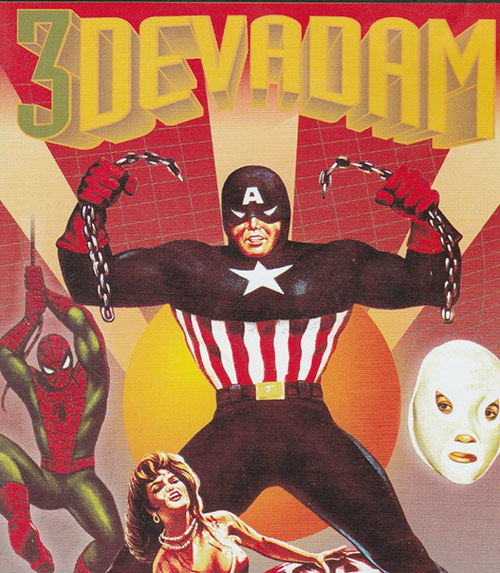

- Death cut space runaway ideon movie#
- Death cut space runaway ideon series#
- Death cut space runaway ideon tv#
It’s of course not on the same level as Toei’s movies for example, but worlds apart from Astro Boy.
Death cut space runaway ideon movie#
If you want to understand what I mean look no further than the short movie Mushi Pro produced in 1962, just a year before producing Astro Boy, to test limited animation, called Aru Machi Kado no Monogatari or “A Story of a Street Corner”.
Death cut space runaway ideon tv#
It’s a philosophy that carries on to this day in TV anime (and to an extent in movies too): getting it out comes first, anything else comes second. Now, animators working on Astro Boy didn’t suddenly unlearn animation, the type of project Astro Boy was, as the first weekly TV anime and in turn with a tight schedule, just didn’t allow for doing anything more than the basics of the basics. Astro Boy was as basic as it gets, sometimes an animation just in name, as it lacked any real sense of smooth motion or sophisticated drawings whatsoever.
/cloudfront-us-east-2.images.arcpublishing.com/reuters/2SQQDZUF4RLIRPHVWW45W7SS4I.jpg)
Going back as far as 1963 and looking at Astro Boy, one could get a good idea of how anime on TV would look like for roughly the next 10 years. Overall Zanscare design is a bit of an acquired taste. Some designs are genuinely brilliant, but others are just strange, like the serpentine Doggorla, and the overall strange obsession with putting giant tires on everything, including mobile suits meant primarily for use in space.
Death cut space runaway ideon series#
On the other hand, Zanscare’s mobile suit design is often very eccentric with mixed results - it’s another thing this series is pretty infamous for.

There’s some excellent mechanical designs in here, especially the Victory and V2 Gundams that are in the starring roles - the V2 in particular is one of my favourite Gundams, and is probably the design that established Hajime Katoki as one of the masters of the mechanical design arts. Sound and music are pretty middle of the road, with nothing really standing out but nothing offensively bad either. Things do occasionally get rough when the budget clearly got tight, and you could probably find some better looking shows from the early 90s, but on the whole it’s quite good looking.

As for the presentation, the level of quality wavers but on the whole it’s pretty good, at least compared to its predecessors. Still, ultimately I found more that I enjoyed than I didn’t in terms of the plot and tone, even if there was plenty that could have been done without. In fact, sometimes I’d say it goes to far in the opposite direction, with strange humour and a lighthearted tone in spots that doesn’t really fit the series’ narrative as a whole. I won’t deny that there is an air of cynicism and despair to Victory at times, apparently because Tomino was suffering especially badly with depression while he was making it, but I’ve seen a lot worse and I think its reputation has been exaggerated a bit. If you look at some of Tomino’s other works outside of Gundam you can find far worse - look no further than the endings of Dunbine or Zambot 3, or the cosmic nightmare ride that’s Ideon: Be Invoked. I felt like Iron-Blooded Orphans had a lot more senseless character death, and while it’s not hard to find tragedy in Victory there was nothing that felt as brutal as, say, Kamille’s cruel fate at the end of Zeta or the aftermath of colony gassings. Some of them are cruel and senseless, and they’re spread out fairly evenly across the series, meaning that it’s not afraid of delivering a gut punch to the viewer early on. Yes, there are a lot of character deaths in this show. The overall tone is one of the things this series is most notorious for, with it being considered the darkest, most brutal and depressing entry in the franchise.


 0 kommentar(er)
0 kommentar(er)
